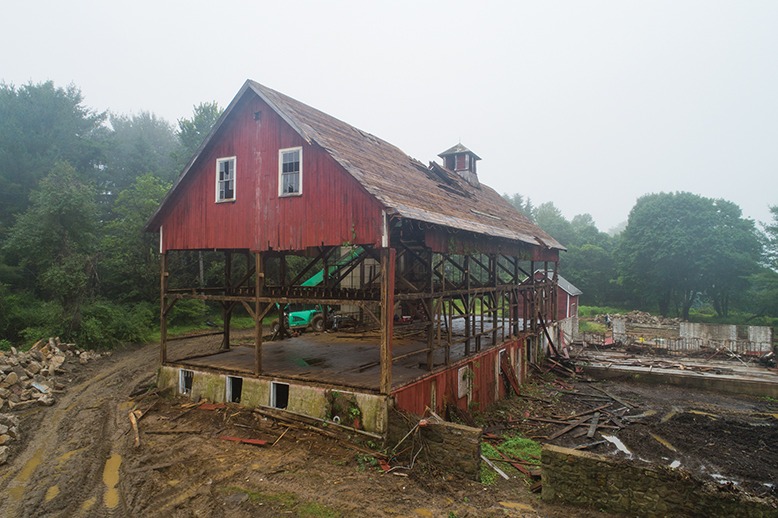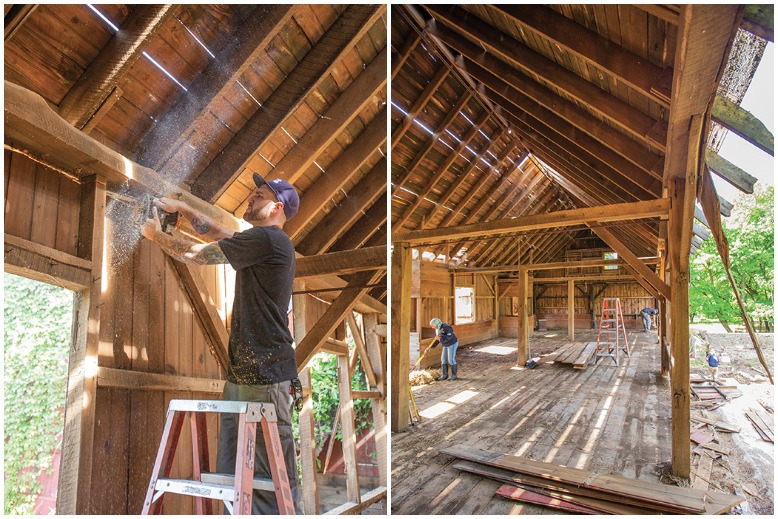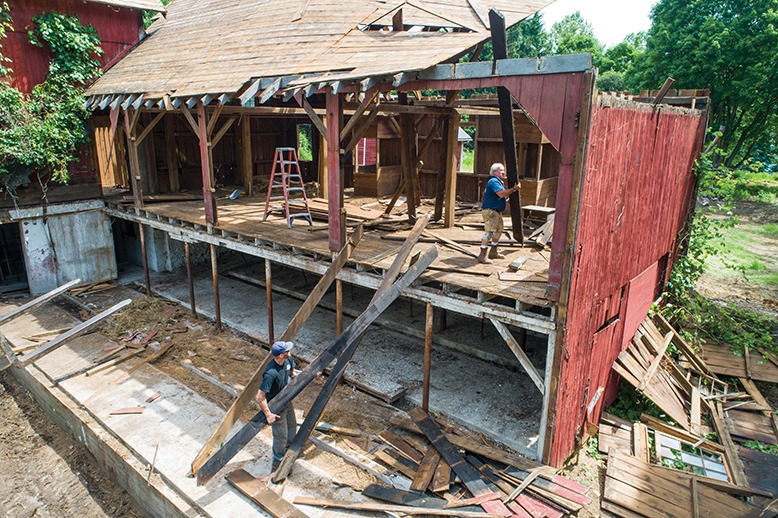
You might think it’s a walk in the park to knock down a 109-year-old barn. Not so, says Gary Horvath, cofounder of Real Antique Wood, an Irvington-based salvage company and mill shop.
“We take it down methodically,” says Horvath. “The logistics are crazy. This is a true labor of love.”
Horvath and his wife, Lisa, started Real Antique Wood in 2011 to disassemble eyesores—mostly vintage barns—and convert the salvaged wood into one-of-a-kind custom mantels, furniture and flooring. Horvath, 56, had been working in the custom-flooring business. He saw an opportunity to give new life to old wood—and make money doing it.

Photo by Joe Polillio
“We like to think we’re preserving the story of these old barns, rescuing the wood and turning it into something remarkable,” he says.
Horvath and his team field calls from all over the country, generally from property owners with unwanted structures. “It’s mostly barns,” Horvath says. From photos and site inspections, they determine if it’s worth salvaging the structure.
One recent project: the takedown of Pitney Farm in Mendham Township. The farm dates to the 1700s; the barn was rebuilt in 1910 following a fire. Because Horvath and his crew hoped to salvage every piece possible, it was a gentle teardown, carefully planned.
[RELATED: How a Local Chef Restored a Tudor Castle]

Photo by Joe Polillio
“When we take a barn apart, we take all the pieces,” says marketing executive Mike Scicolone. “We’ll salvage anything we can, from pegs to hay trolleys and doorknobs and milk jugs.” (Scicolone has since left the company.)
Ultimately, it’s about the wood. The most in-demand woods are heart pine (from the center of the tree), hickory, maple and oak, which is particularly popular for flooring, tables and bar tops. Chestnut is valued as a rare find. But each type of wood has its own characteristics and charm.
Each salvage job is unique. In the case of Pitney Farm, a portion of the grounds is to be converted into a public park. Some of the salvaged wood was set aside to build benches for the park. Real Antique Wood will repurpose the rest. “I’ve probably made 25 mantels from the beams of that barn already,” says Anthony Saraceno, who manages the mill and Real Antique Wood.

Dismantling a historic barn is an exacting process, requiring weeks of logistical planning. Because the team hopes to repurpose every piece of wood, most work is done by hand, with the occasional support of heavy machinery. “The barn has its own plan,” says manager Anthony Saraceno. “There are always surprises.” Photo by Joe Polillio
Planning a teardown takes weeks, sometimes months. The process is different every time. “You start taking it down, but the barn has its own plan,” says Saraceno. “There are always surprises.”
The team has uncovered a world of interesting finds over the years, including a skull, (probably a possum, says Saraceno) and turkey-vulture eggs, as well as a hand-dug well, bullet-riddled walls and an Indian-head penny. “We’re still waiting to find that box of gold coins,” jokes Horvath.
Rarely does any money change hands when a barn or other structure is torn down; the process is almost always by barter, Horvath explains. The barn owners no longer have the headache of a dilapidated structure, and Horvath and his team get the materials to create something new.

Gary Horvath (top), Anthony Saraceno and their team at Real Antique Wood hauled century-old materials from Pitney Farms, loaded it on flatbed trucks, and transported it to the company’s mill, where it was kiln dried. Salvaged wood is then reimagined as new creations. Photo by Joe Polillio
Once the wood is removed, it’s taken to the mill and kiln dried. The heating process, which takes as much as two weeks, forces out any sap and kills any bugs or larvae. “The process dries the wood to 5 to 8 percent moisture,” explains Saraceno.
Horvath and his crew are passionate about their projects, embracing the history of whatever they’re salvaging. Through photos, they share the story with those who obtain the salvaged material. “Ninety-nine percent of the time, there’s an interesting story coming with it,” says Saraceno.
“People love the story,” says Horvath. “It helps them enjoy their new things even more.”
Resources: Real Antique Wood, Irvington, 973-923-3273.



